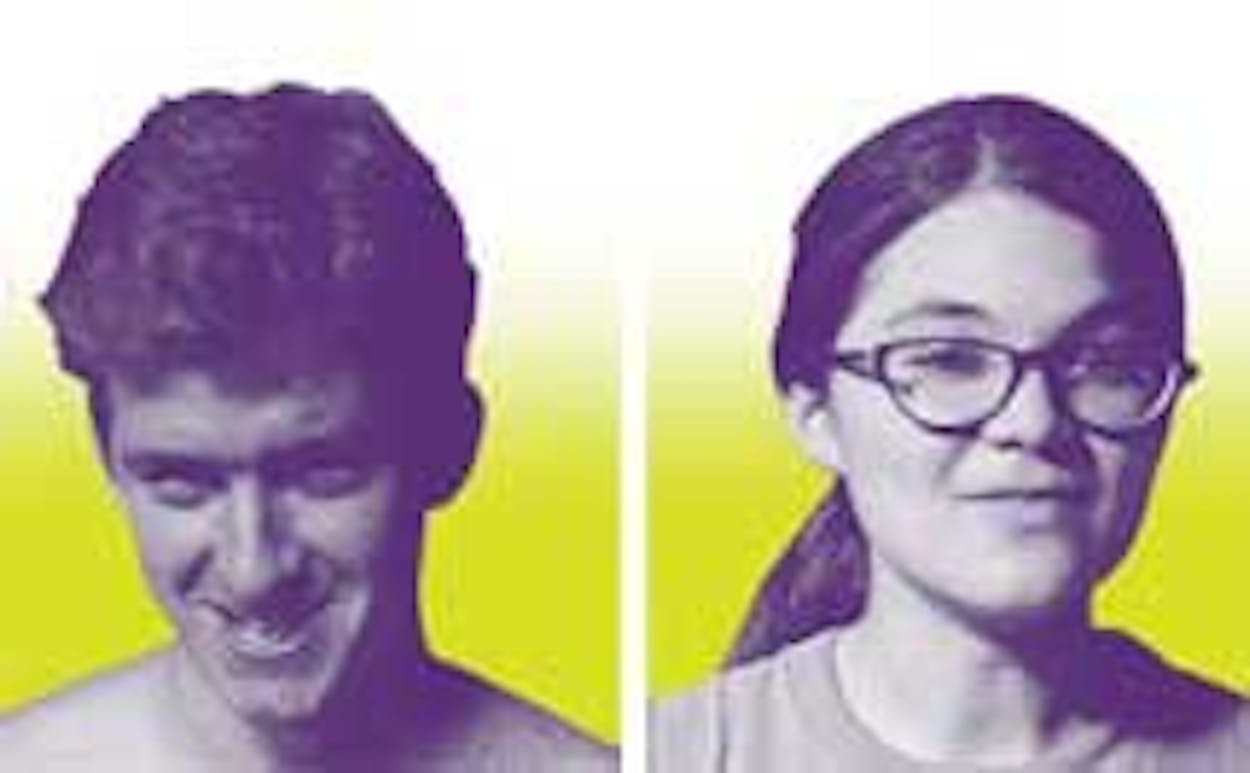Let’s get the groaner of a pun out of the way: These slacker marrieds, the co-founders of the Alamo Drafthouse Cinema chain, are in a league of their own. Then again, there’s something to the idea that the natives of Berkeley, California, and Owensboro, Kentucky, respectively, have revolutionized the moviegoing experience. After meeting at Rice University (he earned degrees in art/art history and mechanical engineering; she majored in biology and French literature), the twosome set out for California. Together they opened their first theater, the Tejon, in Bakersfield, in 1994, but they were frustrated when they were denied a liquor license, so they packed up shop after two years and moved to Austin. In 1997 they opened the first Alamo downtown, serving beer and wine and a full menu, from salads to pizzas, to fellow fanboy and fangirl film geeks. They creatively programmed this and their subsequent hipster outposts (three more in Austin and one in Houston) with original and classic cinematic fare. Ten-plus years later, they’ve sold all but three Alamos as well as the right to franchise the brand (the new owners have since opened in Katy and San Antonio and have Edinburg/McAllen in their sights), but their eat-drink-and-see-movies mentality has taken hold across Texas—and will very likely be coming soon to a theater near you.
A Web Exclusive Interview
Answers from Karrie League
Inherent in the Alamo concept is the notion that people want to engage in a fulfilling all-encompassing experience rather than just watch a movie. Was this the original idea when you started the Tejon Theater in California followed by the Drafthouse in Austin?
It was not the original plan but we did toy with the concept at the Tejon. It was there that we first pulled together a silent film with a local band performing live musical accompaniment, and we invited restaurants to cater certain food-related films. We tried a lot of things to attract people to the theater, which was on the wrong side of tracks, and I think that’s where our carnival sideshow style comes from. We once invited some Hollywood animal trainers to bring a pig for a screening of Charlotte’s Web—a desperate attempt to convince suburban mothers to bring their kids to the bad part of town. It didn’t work extremely well, but it was a lot of fun having the pig there.
Although you still own and operate three Alamos, you sold the franchising rights to focus more on entertainment. What kind of things have you been able to do?
We realized that [the business side] was not how we wanted to spend our time and energy, and that we wanted to concentrate on our employees and customers and on putting on a fun show. Our last three summers since the sale have been spent traveling the country with our outdoor Rolling Roadshow rig, showing famous movies in the locations where they were shot.
Why hasn’t the Alamo model been picked up on a wider scale throughout the country?
There are actually lots of cinemas around the country that serve beer and food. The difference comes from Tim’s creativity in programming. He will go to extraordinary lengths to make an event happen if he likes the idea, often without regard for the economics of time, energy and money. It’s probably that last detail that prevents other people from emulating us too closely.







